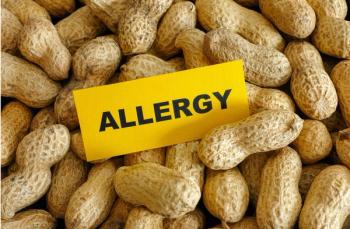
Low Back Pain Triggers: Many Are Modifiable
Brief exposure to a variety of modifiable factors-physical and psychosocial-increases the risk of back pain.
Triggers for an episode of low back pain include both physical factors, such as manual tasks involving heavy loads and awkward posture, and psychosocial factors, such as fatigue, during performance of a task.
Odds ratios for these triggers ranged from 2.7 to 25.0, according to results from a case-crossover study, led by
Writing in
They employed a case-crossover design to quantify the risk associated with transient exposure to modifiable triggers for back pain. Exposure to triggers during the 2 hours before an episode of back pain (termed the “case window”) was compared with exposure in the 24 and 48 hours before back pain onset (“control windows”) in 999 subjects with a new episode of acute low back pain.
Physical triggers included manual tasks involving heavy loads or awkward positioning; handling live people or animals; physical activity; sexual activity; and slipping, tripping, or falling. Psychosocial triggers included alcohol consumption and being distracted or fatigued.
The mean duration of back pain episode was 4.9 days.
Exposure to all physical triggers occurred more often in the case window than in the two control windows. In the case window, exposure to manual tasks involving an awkward posture was the most frequent physical trigger, 27.4%, compared with 7% for the first control window and 5.4% for second control window.
Manual tasks involving heavy loads was the second most common physical trigger during the case window, 17.9%, compared with 6.4% and 5.9% in the first and second control windows, respectively.
Among psychosocial triggers, fatigue was reported more often in the case window than in the two control windows (11.8% versus 6.90% and 6.00% in the first and second control windows, respectively).
Exposure frequency for being fatigued and tired was higher in the case window (11.8%) than control windows (6.90% and 6.00% in the first and second control windows, respectively). Exposure frequency was similar across case and control windows for sexual activity and alcohol consumption.
All physical triggers assessed were strongly associated with an increased risk of back pain. Odds ratios (ORs) for physical triggers of back pain onset were as follows:
- Manual tasks involving awkward positioning, 8.0 (95% CI, 5.5-11.8)
- Manual tasks involving objects not close to the body, 6.2 (95% CI, 2.4-16.0)
- Manual tasks involving live people or animals, 5.80 (95% CI, 2.3-15.0)
- Manual tasks involving unstable or unbalanced objects, 5.1 (95% CI, 2.4-10.9).
Exposure to physical activity of at least moderate intensity during the case window carried an OR of 2.7 (95% CI, 2.0-3.6) compared with no exposure to physical activity, and exposure to physical activity of vigorous intensity increased it further to 3.9 (95% CI, 2.4-6.3).
Psychosocial triggers that significantly increased the odds of new onset of back pain were distraction during a task or activity (OR = 25.0; 95% CI, 3.4-184.5), or fatigue (OR = 3.7; 95% CI, 2.2-6.3). Alcohol consumption and sexual activity showed no association with onset of back pain.
Thirty-seven subjects slipped, tripped, or fell in the 2 hours before back pain onset, compared with one in the first control window and none in the second control window. “This suggests a strong association between this trigger and onset of back pain; however, exposure frequencies were very small in the control windows and slip, trip, or fall could not be sensibly included in the regression analyses,” the authors wrote.
Older age moderated the effect of exposure to manual tasks involving heavy loads (P = .01) but increased the risk with exposure to sexual activity (P = .04). The authors state that this is the first study to find a decrease in risk with age with exposure to heavy loads.
Morning was the most frequent time of day for back pain onset. “The strong diurnal pattern for back pain onset would suggest that the morning may be a key time to intervene in order to prevent back pain,” the authors wrote, noting that restriction of lumbar flexion in the morning reduced pain in one study of patients with persistent low back pain.
Recall bias is a potential limitation, wrote the investigators, but the recall period in this study was short (5 days). Also, the study did not control for time-variant confounders beyond the triggers included.
The National Health and Medical Resource Council was the primary source of funding for this study.
The authors declare no competing interests.
- Reviewed by
Henry A. Solomon, MD, FACP, FACC, Clinical Associate Professor, Weill Cornell Medical College, and Dorothy Caputo, MA, BSN, RN, Nurse Planner
This article was first published on
Newsletter
Enhance your clinical practice with the Patient Care newsletter, offering the latest evidence-based guidelines, diagnostic insights, and treatment strategies for primary care physicians.















































































































































































































































































